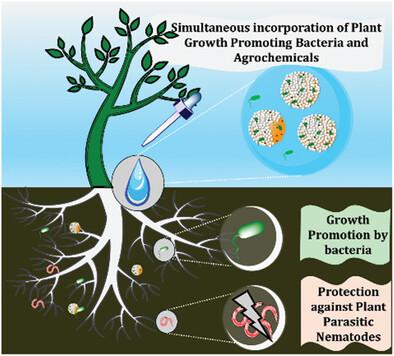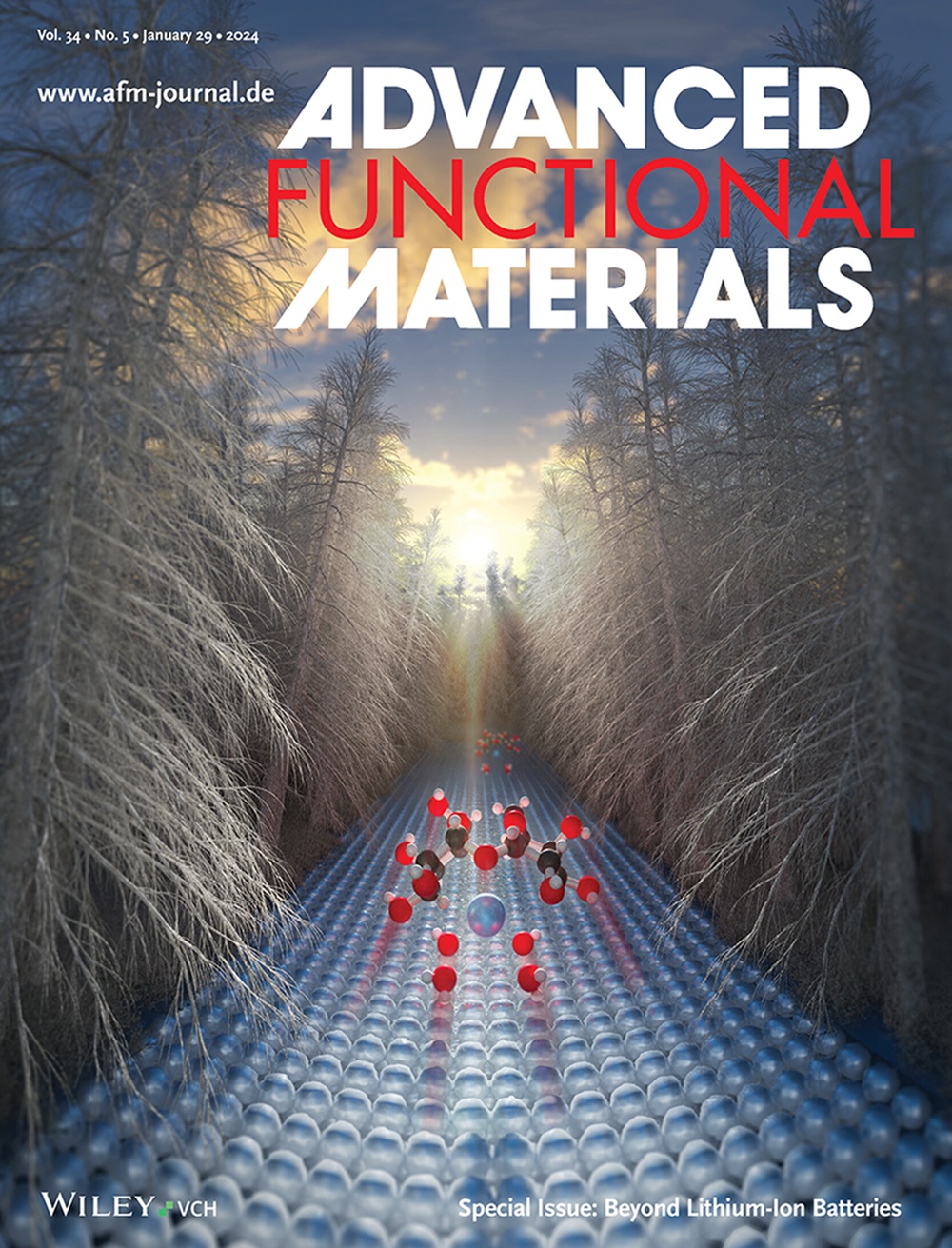IF 18.5
1区 材料科学
Q1 CHEMISTRY, MULTIDISCIPLINARY
引用次数: 0
摘要
非芽孢植物生长促进菌(PGPB)由于难以保持无芽孢的活力,在生物基农用工业中普遍未得到充分利用。本文提出了一种独特的方法,通过整合革兰氏阴性、无芽孢的 PGPB 来制备基于 PGPB 的绿色配方:Pseudomonas simiae (Psi) 和 Azospirillum brasilense (Abr) 加入醋酸纤维素稳定的 Pickering 乳剂中。在没有任何营养供应的情况下,细菌在乳剂中的存活率在储存 4 周后有所提高,与无营养盐水(1X PBS)对照组相比,Psi 和 Abr 的存活率分别提高了 200% 和 500%。转录组学表明,乳化过程中裂解的细菌是重要的营养源,从而提高了细菌的存活率。此外,这些 PGPBs 即使在模型杀虫剂氟吡菌酰胺存在的情况下也能保持存活,在储存 1 个月后,假单胞菌 simiae 的浓度增加了两倍,同时仍能保持氟吡菌酰胺对目标害虫的药效。非孢子型 PGPB 的这一强大存活特性标志着在开发专门针对这些生物的制剂方面取得了显著进展。这凸显了它们在农业和环境领域的实际应用潜力。此外,乳剂还能在不影响性能的情况下同时装载生物(PGPB)和农用化学杀虫剂,从而为提供多种活性物质的单一装载平台带来了希望。本文章由计算机程序翻译,如有差异,请以英文原文为准。

Pickering Emulsion for Enhanced Viability of Plant Growth Promoting Bacteria and Combined Delivery of Agrochemicals and Biologics
Non-sporulating plant growth-promoting bacteria (PGPB) are widely underutilized in the bio-based agroindustry due to difficulties in maintaining viability without spores. A unique approach is presented to prepare PGPB-based green formulations by integrating Gram-negative, nonsporulating PGPBs: Pseudomonas simiae (Psi) and Azospirillum brasilense (Abr) into cellulose acetate stabilized Pickering emulsions. The bacteria show enhanced survivability within the emulsions without any nutrient supply after 4 weeks of storage with Psi and Abr showing 200% and 500% increases respectively relative to non-nutritive saline (1X PBS) control. Transcriptomics suggest that lysed bacteria from the emulsification process act as crucial nutrient sources, thereby boosting bacterial survival rates. Moreover, these PGPBs maintain survival even in the presence of the model pesticide fluopyram, with Pseudomonas simiae concentration showing a twofold increase after 1 month of storage while still preserving the efficacy of fluopyram against target pests. This robust survival trait among nonsporulating PGPB marks a notable advancement in developing formulations tailored specifically for these organisms. It underscores their untapped potential for practical applications in agricultural and environmental contexts. Furthermore, the emulsions enable simultaneous loading of biologicals (PGPBs) and agrochemical pesticides without compromising performance, thus offering the promise of a single loading platform to deliver multiple actives.
求助全文
通过发布文献求助,成功后即可免费获取论文全文。
去求助
来源期刊

Advanced Functional Materials
工程技术-材料科学:综合
CiteScore
29.50
自引率
4.20%
发文量
2086
审稿时长
2.1 months
期刊介绍:
Firmly established as a top-tier materials science journal, Advanced Functional Materials reports breakthrough research in all aspects of materials science, including nanotechnology, chemistry, physics, and biology every week.
Advanced Functional Materials is known for its rapid and fair peer review, quality content, and high impact, making it the first choice of the international materials science community.
 求助内容:
求助内容: 应助结果提醒方式:
应助结果提醒方式:


